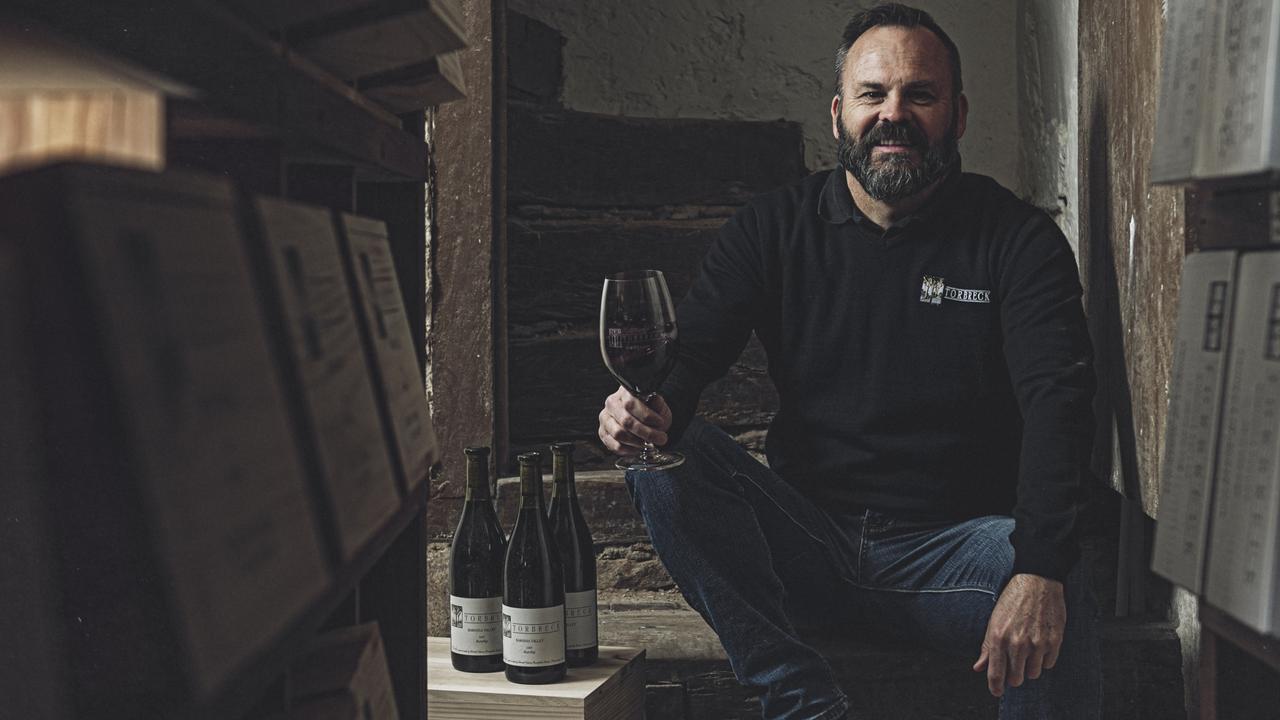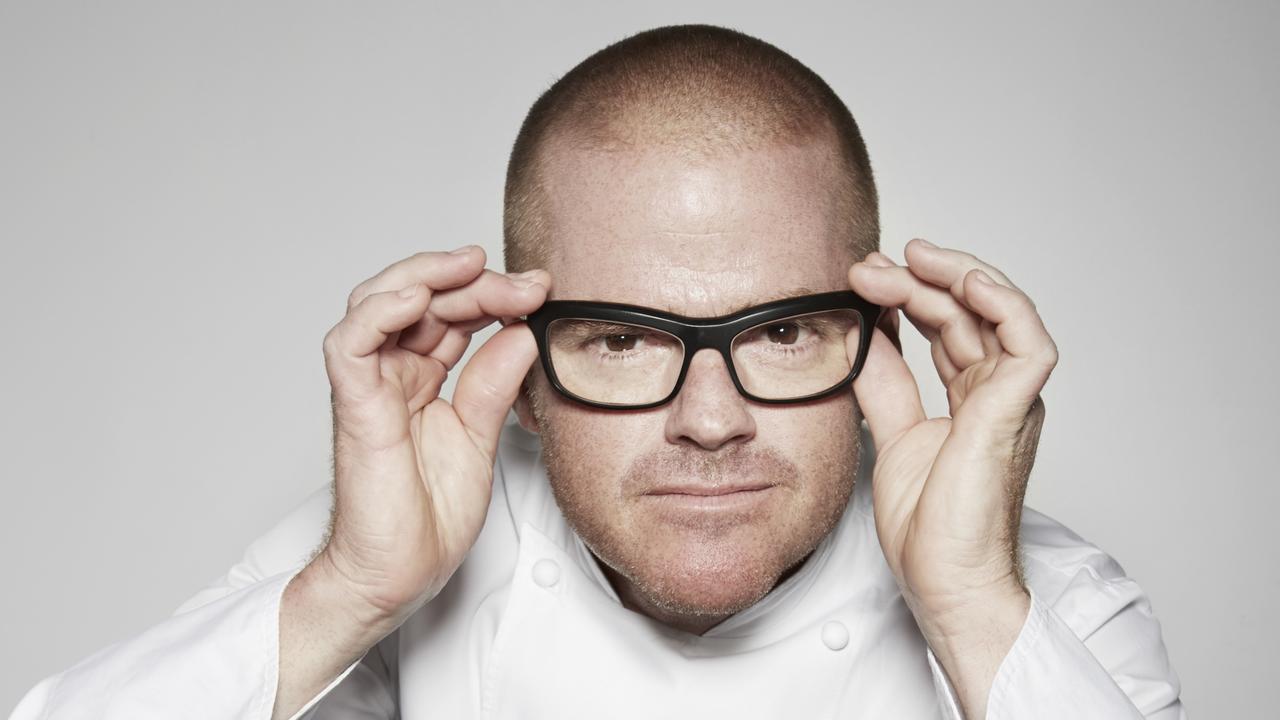From wine lovers to winemakers
Melbourne-based wine impresario, Rory Kent, has created a competition mixing reality show principles and winemaking.

WHAT wine needs is its own reality show. Like My Kitchen Rules, but with grapes instead of cakes. People in the wine industry have been talking about this for years, jealous of the popularity of TV cooking shows. Now, Melbourne-based wine marketing impresario, Rory Kent, has almost answered their prayers with a competition mixing reality show principles and winemaking. It's called Wine: Baptism of Fire. It's not on TV - yet - but with the success of its first outing in real life, it might not be long before it is.
This is how it worked. During vintage earlier this year, five teams who have never made their own wine before were given a tonne of shiraz grapes each from the renowned Mount Langi Ghiran vineyard in western Victoria. The basement carpark of The Prince Hotel in St Kilda was turned into a pop-up winery, with each team making whatever style of wine they wanted. The only proviso was that the wine needed to be ready to be sold by October. Today is launch day. The winner will be the team that sells the most wine over the next six weeks.
Kent convinced some outstanding winemakers to act as mentors: Michael Glover from Bannockburn, Matt Harrop from Shadowfax, Gilles Lapalus from Sutton Grange, and William Downie and Mac Forbes, both makers of eponymous labels. The contestants were mostly wine professionals - sommeliers, bar owners - but Team Lapalus, consisted of one wine-loving teacher and two mates who work in corporate communications.
"We've known each other since high school," says Cheyne McKee, one of the guys in corporate comms. "And we've all developed a bit of a passion for wine. So when we heard about this competition we thought we'd have a crack at it." Once they'd gained their place in the competition, everything happened fast, says McKee. Suddenly, it was time to pick: the trio and their partners found themselves taking a day off work and leaving Melbourne at dawn to harvest their tonne of shiraz themselves. Weeks of early mornings and late nights checking ferments, pressing and filling barrels followed.
"And now it's over, I just want to do it all again," says McKee. "Winemaking is addictive. Now we're trying to figure out how to do it again next year."
The process of making her own wine was eye-opening, too, for wine rep Beth Bicknell, a member of Team Forbes. "I've always respected winemakers," says Bicknell. "But now I have a huge amount of respect for them. The way they have to combine art, science and intuition when they're making wine. And cope with every obstacle that comes your way."
Bicknell and her teammate, sommelier Brodie Comer, wanted to turn their grapes into a "p aactillant naturel", or "naturally sparkling" pink wine, so they bottled it before the juice had finished fermenting, capturing the carbon dioxide in the bottle. Without proper refrigeration or equipment in the carpark winery, though, it was always going to be risky - as Team Forbes learned the hard way: they had to disgorge the overly-fizzy end-product by hand, and lost a lot of froth in the process.
"Luckily, we had Mac as our mentor," says Beth. "He was so cool about it, so generous with his time. Made us realise that, to be a winemaker, you always have to have three plans for every situation that might arise."
For Sydney wine bar owner, Gab Webster of Team Harrop, the big lesson was being able to follow the smells and sensations from the vineyard during harvest, through to the smells and sensations of drinking the wine made from that vineyard - in other words, to be able to taste the terroir from ground to glass. "It was an amazing experience," she says. "Mindblowing. We did as much as we could to ensure that just the grapes went into the fermenter. But after it finished fermenting, this unmistakable central Victorian eucalypt character became so prevalent in the wine. Some people don't like it, but to me, it's what it is. It tastes of where it's from."
The contestants aren't the only ones who've had their minds blown by the experience. Winemaker Michael Glover was mentor to sommelier Banjo Harris Plane, who was determined to make his shiraz in a hands-off a style (no added yeast, no added acid, no added sulphur), despite his mentor "bombarding Banjo" with reasons why taking that approach was folly.
"To his credit, though, he stuck to his guns and it's paid off," says Glover. "And I've gained from that: it's made me question my own arguments, seeing his success. When you think about what the competition is about - getting a drinkable wine to market quickly - the path Banjo chose was bang on."
Regardless of who wins, all the contestants now have a deep understanding of the pitfalls and pleasures - and the reality - of winemaking. As Cheyne McKee from Team Lapalus says, "At the end of the day, being able to take a bottle home and crack it open and say 'I made that' is pretty cool."
For more detail and pictures from the contest, check out: winebof.com
* * *
MAX ALLEN's VERDICT
Vintage Cellars are selling all the wines ($30 each) and the teams are holding tastings at selected shops today from 1pm. (vintagecellars.com.au/WineClub/Events). All proceeds will go to the Wine Rules charity to benefit St Mary's House of Welcome.
Method & Madness, by Team Forbes. Beth Bicknell warned me this sparkling wine might be a bit lively, but the bottle I opened was only gently fizzy - petillant indeed. It's a bold pink colour, slightly cloudy, there's lots of cranberry-like crunchy fruit, then a twist of grippy dry tannin. It'd be great with antipasto, especially salami.
After Hours, by Team Lapalus. The idea with this wine was to make a beaujolais-style red, with really juicy, slurpy, upfront fruit flavours. And the boys have certainly achieved that: it's bursting with youthful dark berries. But it also has some grunt to it, a meaty richness that would make it taste delicious with steak off the grill.
Cain & Abel, by Team Downie. The team wanted to make a wine that emphasised shiraz's dark, savoury side rather than its fruity power and, again, they've nailed it: there's some good prickly, brambly fruit in here, but also dry tastes of graphite and pencils - like licking stone - typical of shiraz from the Langi vineyard.
Mast, by Team Harrop. Naed after the great Trevor Mast, the legendary Langi winemaker who died last year, this wine clearly tells the story of its terroir: you stick your nose in the glass and your nostrils fill with little black berries and that dusty gumtree scent so reminiscent of central Victoria. A beautiful, elegant expression of shiraz.
Onwards, by Team Glover. The most out-there winemaking - wild ferment in a ceramic egg, no additions except a little sulphur at bottling - yet in some ways this is the best-behaved wine: fine black fruit aromas, refined tannins, poise and restraint.


